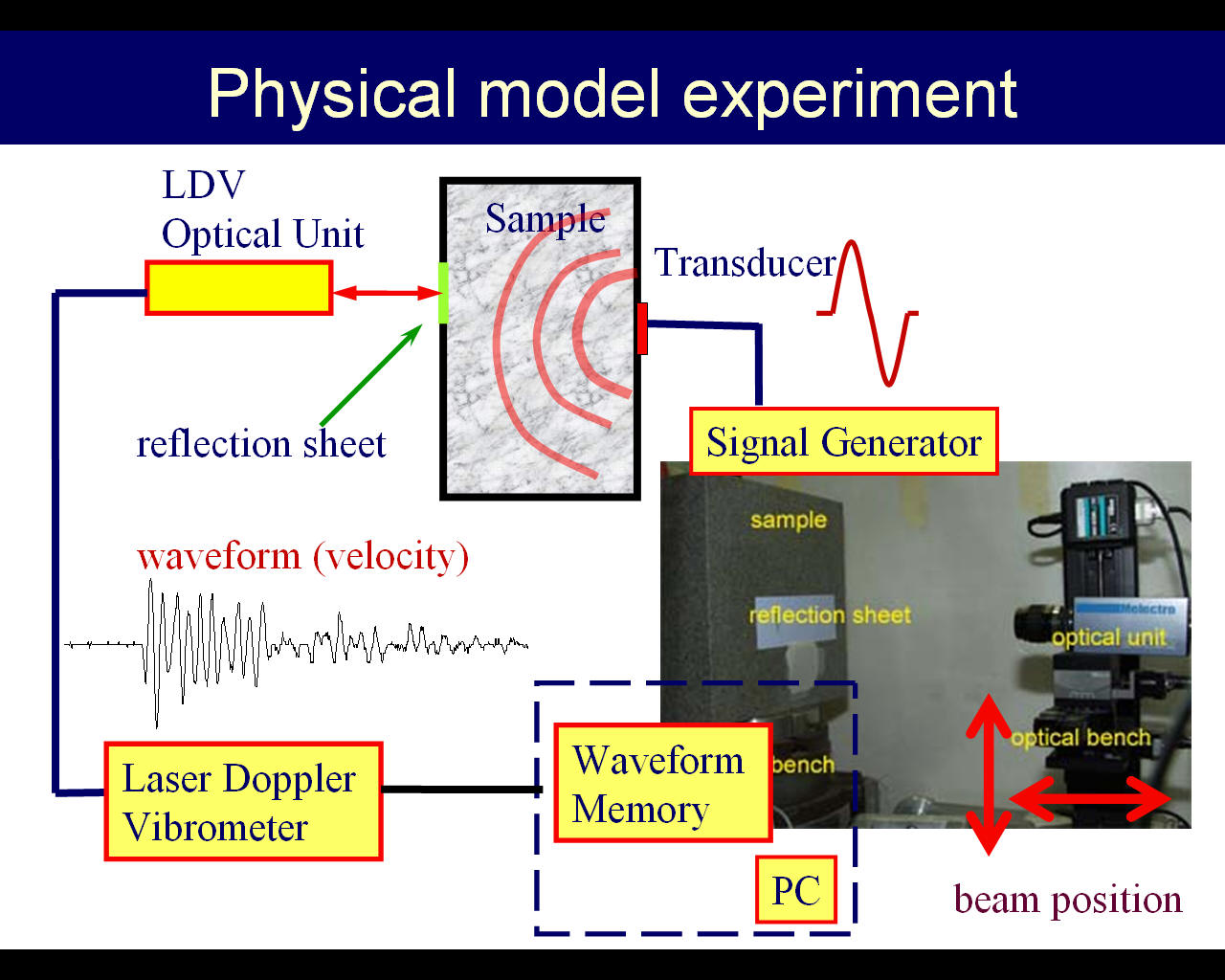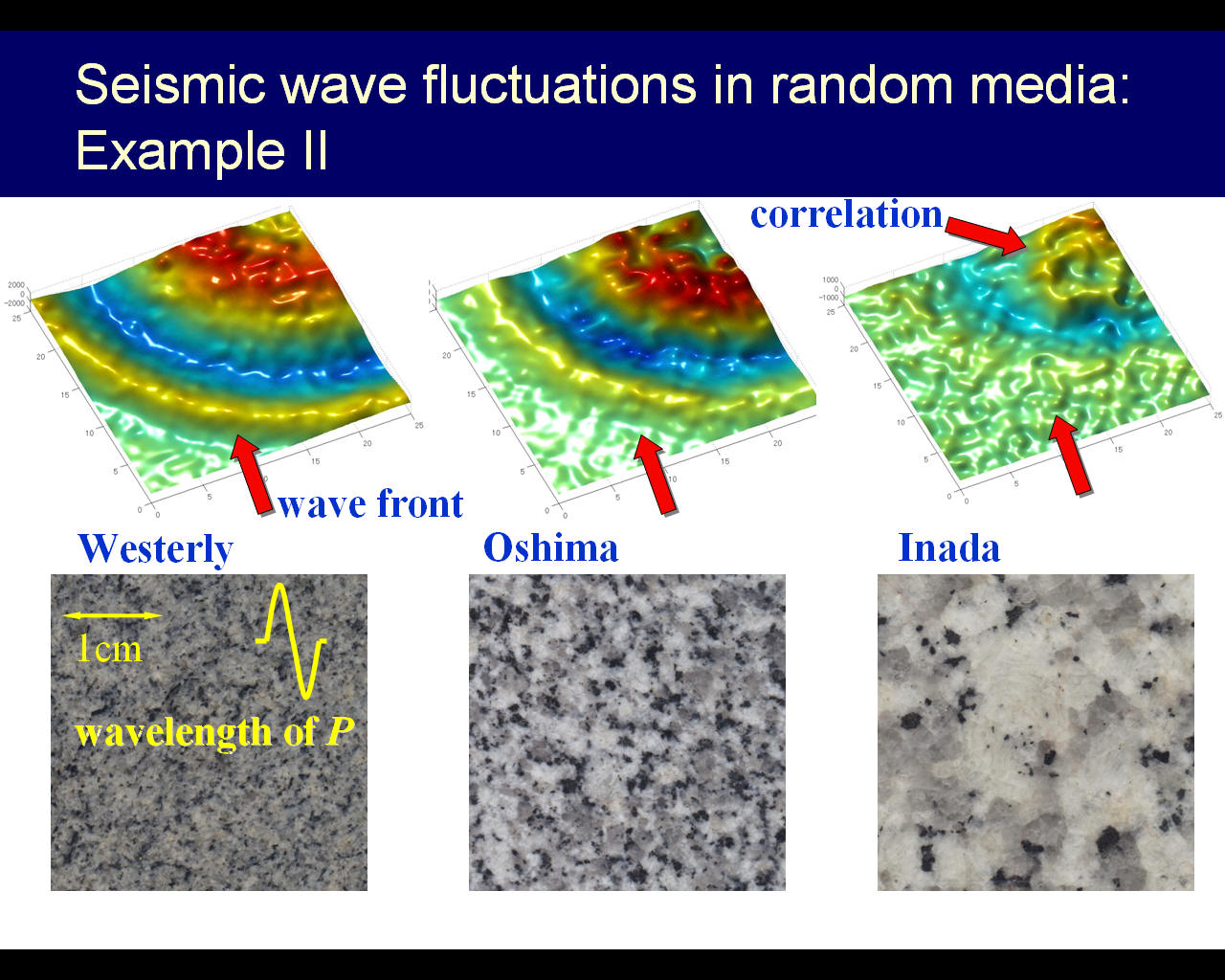|
Proposal for establishing Proposed by Dr.Ali O. Oncel Scope of Laboratory: The purpose of experiments under the applied experimental seismology laboratory is to study the wave phenomena in random heterogeneous media. The rocks like shown in the following paragraphs are used just for models of random heterogeneous media. Similar experiments also can be done by numerical simulations, but the numerical studies can be carried out only for the 2-D cases. In the 3-D cases, it is still impossible to study wave phenomena in random heterogeneous media because huge computer resources are needed but it is a future goal of such works. By the undertaking such a laboratory under the Earth Science Department, gaining experiences on applied or experimental seismology will be offered for students to consider working on applied seismology for their academicals career. Additionally, the Earth Sciences of KFUPM will have another chance to be represented as a contributor to applied seismology communities and will have an other option to increase present reputation with appeared internationally recognized works as well as applied seismology group within the respectful global science community. Thus, establishing such a laboratory will encourage the department to offer world-widely reknown persons being as an Adjunct Professor in Earth Science Department as well as for some of member working under the applied seismology group to be invited by another scientific laboratory. Finally, short courses and workshops will be organized by the global contributors for whom they are willing to be registered to have a perspective for applied seismology not only through the Arabia but also world. Elements of Laboratory: The suggested physical model for initial part of applied seismology laboratory is shown in the following picture that is taken from one part of applied seismology laboratory that Dr. Osamu Nishizawa from the Geological Survey of Japan has been successfully leading and offering post-doc positions nearly for the last 20 years.
Output of Laboratory: One of the example for expected output is shown in below figures. The figures illustrate how seismic waves are distorted by heterogeneities. The wave fields in the three granites are different because of distortions of seismic waves caused by random heterogeneities in the rocks, even for the waves from the same source. Heterogeneities in the Earth's crust are of different sizes, and seismic waves are fluctuated due to the random heterogeneities. Seismic data analysis should be made by considering the uncertainties caused by seismic wave fluctuations. Laboratory experiments will help us to develop practical methods for imaging the subsurface structures by studying this kind of complex phenomena in seismic wave propagation. Thus, the following link indicates the real-time variation of elastic properties through the bodies of shown granites having differential heterogenities. Laser Doppler vibrometer Nishizawa et al. [2, 3] measured ultrasonic waves by using a laser Doppler vibrometer (LDV). LDV measures Doppler shift of laser irradiated on solid surface. When laser beam is reflected to the same direction as the incident direction, the Doppler shift gives the velocity of surface vibration along the incident beam direction. The velocity of the surface vibration is converted to voltage signal. Figure 3 illustrates model experiments by using LDV. In model experiments, we use piezoelectric transducer as a detonator. Ultrasonic waves are detected by LDV. The output voltage of velocity signal is very small and usually masked by the noise generated from the electronic devices of LDV. Since the electronics noise consists of much higher frequencies than the frequencies of elastic waves, it can be eliminated if we stack the observed waveform by repeated measurements. When the number of stacks is larger than 1000, the noise is considerably reduced and the data quality of waveform is sufficient for analysis. As a receiver of ultrasonic waves, LDV has the following advantages over the conventional piezoelectric transducers. 1. Non-contact measurement 2. Very small observation area 3. Performance for measuring three-component vibrations 4. Flat frequency response Non-contact measurements guarantee to reproduce accurate wave field without any disturbance caused by attached detector elements. Laser beam is focused in a very narrow area less than 50 m in diameter. This allows us to use ultrasonic waves from several millimeters to several centimeters because we can measure changes in waveform within small distances. This reduces the sample size to laboratory scales, making model experiments very easy and tractable. Measurements of three-component particle motions can be attained by using small spherical glass lenses, which reflects the beam exactly along the incident direction [3, 6, and 8]. Thin reflection sheets having small spherical lenses about 50 m in diameter are commercially available (Figure 4: The sheets are used for reflective traffic signs or for slide-projection screens). If we measure waveforms in different directions, we can calculate three-component particle motions by component transformations. Since LDV is an optical detector, there is no resonating element for measuring waves. This assures a flat frequency response up to about 2 MHz. Above this frequency, the electronics noise deteriorates ultrasonic signals.
Requested Budget for Lab:
TOTAL REQUESTED BUDGET: 780,000 Saudi Riyal International Collaboration:One of the main purpose in establishing such a laboratory is to open windows for cooperating other geological surveys. During the establishing and processing of suggested laboratory, we aim to cooperate with Dr.Osamu Nishizawa who has worldwide expertise on the applied seismology. His homepage and related papers are shown as: http://staff.aist.go.jp/osamu-nishizawa/index_E.html
Links for world-wide experimental seismology labs Rock Physics & Chemistry Group of Edinburgh University Applied Seismology Laboratory of Liverpool University Department of Earth Sciences Surface Wave Dispersion Analysis and Modeling Lab Applied Experimental Geophysics Laboratory of Purdue Universiy Wave Propagation in Fractured and Cracked Media International Society for Rock Mechanics
References: [1] H. Sato and M. C. Fehler, Seismic Wave Propagation and Scattering in the Heterogeneous Earth, Springer-Verlag, New York, 1998. [2] O. Nishizawa, T. Satoh, X. Lei and Y. Kuwahara, Laboratory studies of seismic wave propagation in inhomogeneous media using a laser Doppler vibrometer, Bull. Seis. Soc. Am., 87, 809-823, 1997. [3] O. Nishizawa, Satoh, T. and Lei, X., Detection of shear wave in ultrasonic range by using a laser Doppler vibrometer Rev. Sci. Instrum. 69, 2572-2573, 1998. [4] A. Frankel and R. W. Clayton, Finite difference simulations of seismic scattering: implications for the propagation of short-period seismic waves in the crust and models of crustal heterogeneity, J. Geophys. Res., 91, 6465-6489, 1986. [5] Spetzler, J., and Snieder, R., The effect of small-scale heterogeneity on the arrival times of waves: Geophys. J. Int., 145, 786-796, 2001. [6] Spetzler, J., Trampert, J., and Snieder, R., The effect of scattering in surface wave tomography, Geophys.J. Int., 149, 755-767, 2002. [7] Fehler, M., Wu, R. S., Huang, L., and Xie, X. B., Numerical investigations of migration imaging resolution: Roles of data-acquisition configuration and imaging propagators, Proc.7th SEGJ International Symposium, Nov., 2004 Sendai, Japan, 204-208, 2004.
|

